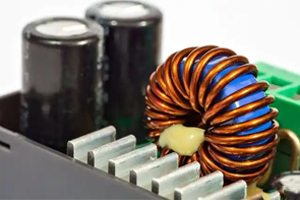What is a Microcontroller? What It Is and How It Powers Everyday Devices
Author:admin Date: 2025-06-28 03:40 Views:389
Different electronic devices are designed to achieve a specific purpose. To make this possible, they often have circuits specific to that application. Some of these circuits include microcontrollers and microprocessors. Having a good understanding of how the two work helps you see how best they can be used in electronics. Our focus today is on microcontrollers, aiming to gain a deeper understanding of them and explore their various applications.
What is a Microcontroller?
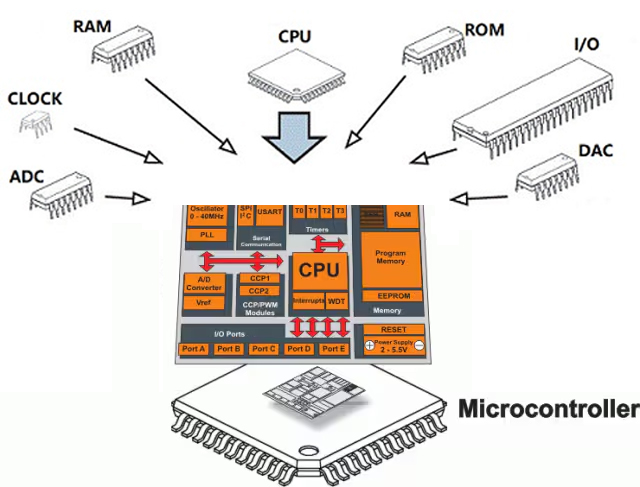
A microcontroller is a small integrated circuit that is designed for controlling specific functions in an embedded system. When we refer to an integrated circuit, we mean it is a self-contained unit that contains a processor, memory, and input and output peripherals. It is basically a computer on a chip.
Key Components of a Microcontroller
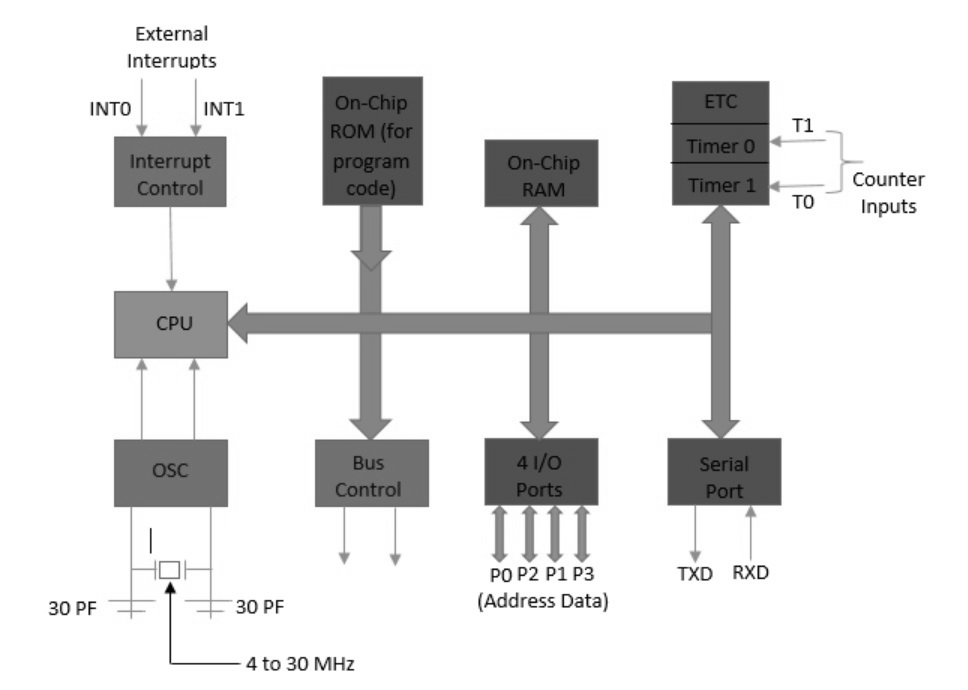
A good example of a microcontroller is the Arduino microcontroller, which is known for its performance and ease of use. Such a microcontroller has several key components that make it work efficiently. Here is what to expect as components.
Central Processing Unit (CPU)
The microcontroller CPU is the brain of the unit, as it is responsible for executing instructions and performing calculations based on the input.
Expect different microcontrollers to have different capabilities based on the processing power of the CPU. Some will be faster compared to others.
Memory
You also get the microcontroller having a memory. The memory can either be non-volatile or ROM, or volatile, which is RAM.
The non-volatile memory of the microcontroller remains in the system even when the power is turned off. This is key in running the microcontroller. It works as the operating system of the unit.
The volatile memory, such as RAM, is used for temporarily storing data during program execution. This includes variables and intermediate results. This type of data is lost when you turn off the power.
Input/Output (I/O) Ports
Another good example of a microcontroller is the STM32 microcontroller, which has input/output ports. These ports enable the microcontroller to interact with external devices. That is how you can send data from the sensors and send an output to sensors, actuators, and other devices, depending on the use.
Different microcontrollers will have different ports available for use. It all depends on the generation and whether new ports have been added to make it modern for certain applications.
Peripherals
These are additional components that can be important depending on how the microcontroller is used. For example, you can use timers or counters to time events, generate delays, and count external signals.
There is also an analog-to-digital converter for converting the analog signals from the sensors into a digital format that the microcontroller can interpret.
The communication interfaces of the ESP32 microcontroller are crucial for enabling communication with other devices. Examples include USB, I2C, SPI, and UART.
How a Microcontroller Works
With the idea of what is a microcontroller in mind, next is to understand how well it works.
Well, a microcontroller is designed to perform specific functions, which dictate how it works. So, each time when it is powered on, the CPU fetches and executes instructions from the loaded program in its memory.
The program might involve reading data from the input pins, performing calculations, storing data in its memory, writing data to output devices, and much more.
All in all, the microcontroller behavior largely depends on how it is programmed. It typically repeats a cycle of fetching, decoding, and executing a specific set of instructions as it continues to interact with the input and output pins to perform specific tasks.
Types of Microcontrollers
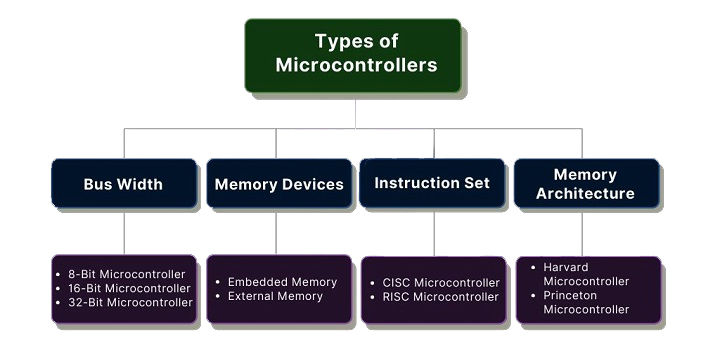
You are likely to encounter various types of microcontroller boards, each designed for specific functions. There can be many ways to categorize microcontrollers. For example, we can do it by bit size, memory configuration, and instruction set. Let’s examine what each option offers below.
By Bit Size
8-bit microcontrollers: These are the most basic types of microcontrollers in the market. You can use them for simple tasks and small appliances. Examples for such include PIC1x, MC68HC11, and 8031/8051 families.

16-bit microcontrollers: These offer better performance and precision compared to the 8-bit models. In such cases, they can be utilized in medical devices, industrial controls, and automotive systems.
32-bit microcontrollers: These offer the highest processing power. In that case, they are primarily used in demanding applications. This includes gaming consoles, advanced control systems, and high-end industrial automation.
By Memory Configuration
External memory microcontrollers: Such microcontrollers do not have a program memory on the chip but rather depend on an external memory component.
Embedded memory microcontrollers: These are microcontrollers that feature all the necessary components needed to operate independently. This includes the program memory, data memory, and timers, all on the chip.
By Instruction Set
RISC (Reduced Instruction Set Computing) – These microcontrollers are designed to use simplified instruction sets. This allows for faster execution speeds.
CISC (Complex Instruction Set Computing) – These microcontrollers are built to have a more extensive instruction set. This could lead to slow execution, but it will be able to handle more complex operations.
Additional Types
ARM Microcontrollers: These are built based on the ARM architecture, which is known for its performance and reliability. That is why you can get such units in industrial applications.
PIC Microcontrollers: These are also popular microcontrollers because of their versatility and compact size. That is how you will find them in a wide range of electronics.
FPGA-based microcontrollers: they offer more flexibility thanks to programmable logic. This is important for customizing them to specific applications.
Atmel AVR Microcontrollers: This is another popular microcontroller family known for its performance and flexibility. You should expect to come across it in automotive applications.
Applications of Microcontrollers
Microcontrollers can be found in many devices. It can range from simple household appliances to more complex industrial machinery and medical devices. Below are the typical applications of microcontrollers.
Consumer Electronics
Examples include home appliances, smartphones, mobile devices, and cameras. Microcontrollers are used in various appliances, including washing machines, microwave ovens, refrigerators, and others. They can be key in controlling multiple functions such as temperature, motor control, and timing.
Smartphones and mobile devices also need microcontrollers to manage power, handle touch input, and other features.
Automotive Industry
Engine control can be done by a microcontroller board to manage fuel injection, ignition timing, and other key engine performance parameters. It is the same thing with regulating gear changes in a transmission.
You may also get the microcontrollers in braking systems where they can control the anti-lock braking system (ABS) and other types of advanced braking technologies.
You can also use them to control various systems in a vehicle with microcontrollers. Such features include climate control, airbags, and power steering.
Industrial Automation
Robotics could use microcontrollers for controlling the movements and actions of the robot in an industrial setting.
They can also help with process control. This includes managing and automating various industrial processes. Such includes sorting systems, assembly lines, and conveyor belts.
Machine control is also possible with microcontrollers, as they can be used for controlling a wide range of industrial machinery and equipment.
Medical Devices
Diagnostic equipment, such as MRI machines and CT scanners, requires microcontrollers to perform their functions. You may also get the same units in pacemakers, insulin pumps, and other similar devices.
Monitoring devices, such as heart rate monitors and blood pressure monitors, can utilize these units to track patients’ vital signs.
How to Choose the Right Microcontroller for a Project
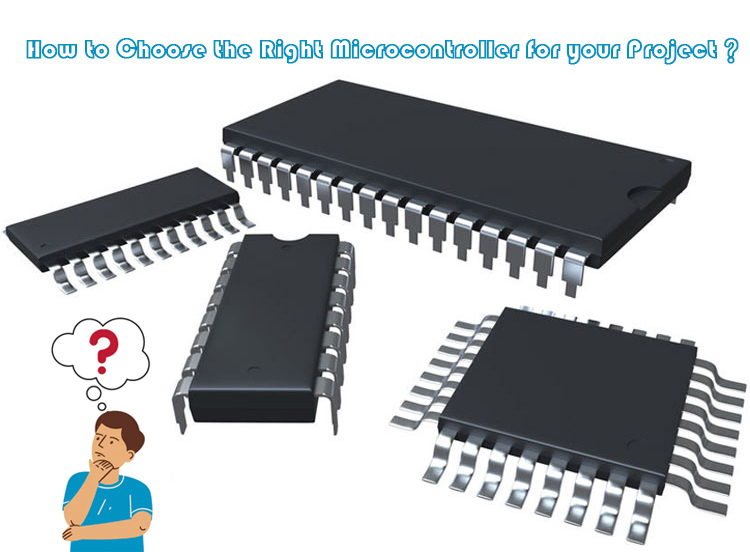
With numerous options available on the market, it can be challenging to select the right microcontroller. Below is a quick guide to help you choose between different options, such as the NXP controller or PIC microcontroller.
Understand the Project Needs
The project needs can include functionality, input/output, communication, response time, and data storage.
Functionality determines the specific tasks that the microcontroller will do. For example, in a weather station, you need a microcontroller for reading temperature, pressure sensors, humidity, and displaying this data for you to interpret.
The input and output devices can also determine which microcontroller you can use. You need one with the ports that support these devices.
As for data storage, you need a microcontroller with enough memory to handle the instruction set loaded onto it. Will the onboard memory be enough, or will you have to connect to an external source?
Look at the response time as well, it should be quick enough to handle different types of events.
Hardware and Software Compatibility
You also need a unit that offers a wide range of compatibility with hardware and software available. The interfaces you have can determine if it can support certain type of communication protocol. Examples include I2C, USB, SPI, and UART.
Microcontroller Architecture
The architecture can determine if the microcontroller will work for your application or not. For example, the bit size will be important to understand its processing power. That is why you have options such as 8-bit, 16-bit, or 32-bit.
Examine the core architecture, as it can also influence power consumption, speed, performance, and available resources.
Memory Requirements
The memory type and size are crucial to how microchip microcontrollers function. Some can have a decent memory capacity, which means impressive performance without thinking of external memory devices.
Also, consider the RAM, as it is crucial for data manipulation and temporary storage during runtime. Therefore, select a unit that provides sufficient memory for your application.
Cost and Power Use
Of course, anyone will have a budget for getting a microcontroller. Consider the features you’re getting for the price. This ensures you get value for money. Sometimes, the application also determines the unit to get. No need to overspend on a model with features you will not be using.
The power efficiency is also important. You need a model that does not use a lot of power, mainly for battery-powered applications.
Scalability
You also need to consider the future and determine if it will be possible to continue using the same microcontroller. It should be designed to allow for future expansions or upgrades, ensuring optimal performance without requiring replacement.
Issues in Microcontrollers and How to Resolve Them
Several factors can impact the microcontroller’s operation. Below, we highlight such issues and how best you can resolve them.
Hardware Issues
You may experience unstable voltage at times, which can affect how the microcontroller operates. It is worth noting that the microcontroller needs a stable power supply. If the supply has fluctuations or interruptions, then it can lead to erratic behavior or failure. So, ensure you use a regulated power supply and protect the unit from voltage spikes.
Electrical interference, such as noise from motors, relays, and other components, tends to disrupt how the microcontroller works. The solution is to use proper grounding, shielding, and other key filtering techniques.
Software Issues
There can be software issues, such as memory stack overflow, that affect the performance of the unit. The solution is to review the code to ensure the microcontroller can properly use its data structures. Use debugging tools to monitor such performance.
Incorrect pin configuration could also lead to issues with the code and hardware. Make sure to verify the pin configuration to ensure everything matches so that you can get the expected output.
Environmental Issues
Extreme temperatures affect how the microcontroller works and its lifespan. This is why you should consider a microcontroller that can operate within the specific range you have in mind. Also, introduce cooling and heating options as needed to keep the microcontroller within the right operating temperature.
Watch out for static electricity as it can also damage the microcontroller. Make sure to use a good ground point and ESD protection while assembling or using the microcontroller.
Conclusion
A microcontroller will be a useful device, depending on where you use it. We have seen how it can help in controlling processes in industries, running consumer electronics, and many other applications. So, the next time you design the circuit of a device, you know to incorporate it into your work. Make sure to follow the troubleshooting tips mentioned above to end up with a working unit. Also, keep in mind the buying tips so that you get the right microcontroller for the job.
Please send RFQ , we will respond immediately.
Frequently Asked Questions
Microcontrollers vs. Microprocessors? Is there a difference?
A microprocessor is the central processing unit or CPU of a computer, while a microcontroller is a single chip that features the CPU, memory, and peripherals to work. You should get microprocessors mostly being used for general computing purposes, while the microcontrollers will be in embedded systems to control specific devices or perform particular functions.
Do you need to know programming before using microcontrollers?
Yes. Basic programming is essential if you want to use microcontrollers. You will need to give it instructions on what to do, and this is done through a programming language. The most common languages for microcontrollers are C/C++. You can find some models that support MicroPython.
Which is the best microcontroller for beginners?
The Arduino Uno is a top choice for beginners. This is because it is simple to use, has a wide community support, and multiple learning resources are available.
